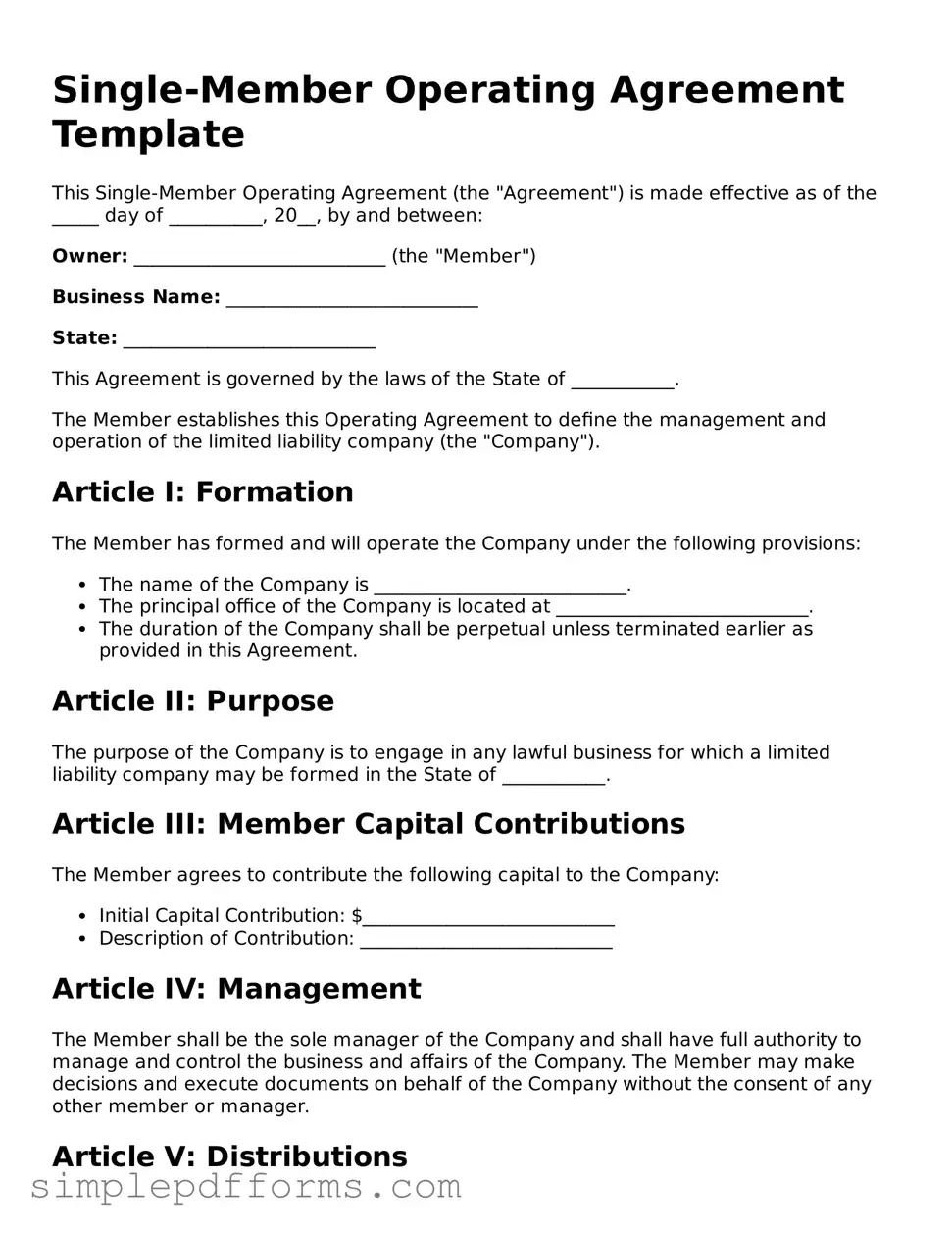Single-Member Operating Agreement Template
This Single-Member Operating Agreement (the "Agreement") is made effective as of the _____ day of __________, 20__, by and between:
Owner: ___________________________ (the "Member")
Business Name: ___________________________
State: ___________________________
This Agreement is governed by the laws of the State of ___________.
The Member establishes this Operating Agreement to define the management and operation of the limited liability company (the "Company").
Article I: Formation
The Member has formed and will operate the Company under the following provisions:
- The name of the Company is ___________________________.
- The principal office of the Company is located at ___________________________.
- The duration of the Company shall be perpetual unless terminated earlier as provided in this Agreement.
Article II: Purpose
The purpose of the Company is to engage in any lawful business for which a limited liability company may be formed in the State of ___________.
Article III: Member Capital Contributions
The Member agrees to contribute the following capital to the Company:
- Initial Capital Contribution: $___________________________
- Description of Contribution: ___________________________
Article IV: Management
The Member shall be the sole manager of the Company and shall have full authority to manage and control the business and affairs of the Company. The Member may make decisions and execute documents on behalf of the Company without the consent of any other member or manager.
Article V: Distributions
The Member shall receive all profits and losses of the Company. Distributions will be made at the discretion of the Member.
Article VI: Indemnification
The Company shall indemnify the Member for any losses, liabilities, or expenses incurred in the course of operating the Company, provided that such indemnification shall not apply to matters arising from gross negligence or willful misconduct.
Article VII: Amendments
This Agreement may be amended only by a written agreement signed by the Member.
Article VIII: Governing Law
This Agreement shall be governed by and construed in accordance with the laws of the State of ___________.
IN WITNESS WHEREOF, the Member has executed this Operating Agreement as of the date first above written.
___________________________ (Member Signature)
___________________________ (Printed Name)
